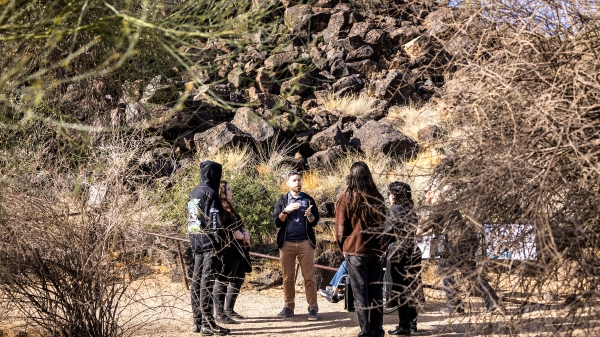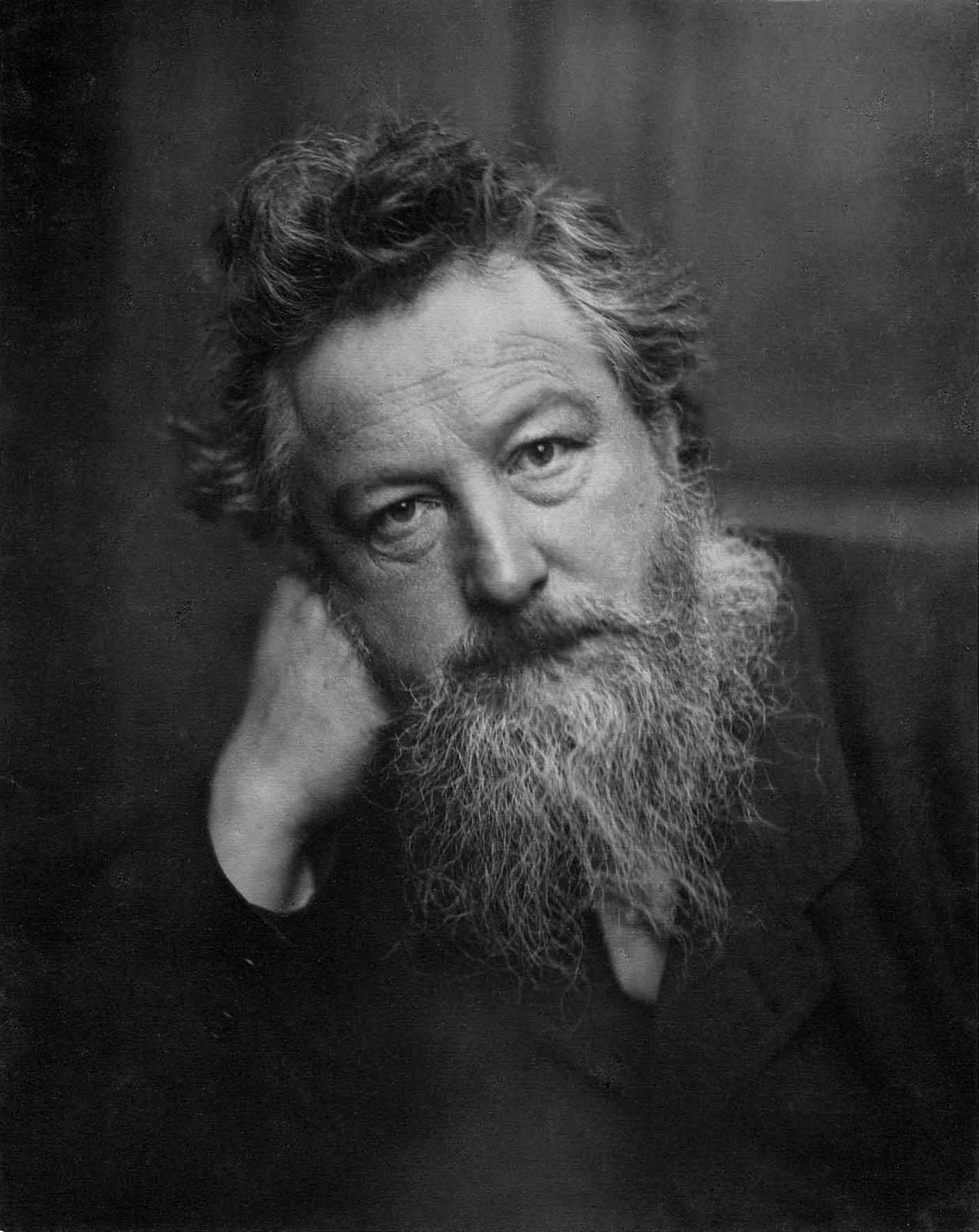In praise of beautiful books: Hayden Library to display 'Kelmscott Chaucer'

The ASU Library is marking the 125th anniversary of the 1896 Kelmscott printing of “The Works of Geoffrey Chaucer: Now Newly Imprinted" as part of International Kelmscott Day on June 26. Photo courtesy Kelsey Hinesley
In what reads like a piece of advice from a 19th-century version of Marie Kondo, British textile designer William Morris once wrote, “Have nothing in your houses that you do not know to be useful or believe to be beautiful.”
An artist, poet and visual designer, Morris was devoted to beautiful things and created many in his lifetime. In 1891, he founded the Kelmscott Press out of a desire to return to an artistic craft that had faded during the Industrial Revolution: the finer production of books.
The ASU Library holds all 53 titles printed by Kelmscott, including the 1896 publication of “The Works of Geoffrey Chaucer: Now Newly Imprinted,” thought to be one of the most beautiful books ever printed, exemplifying Morris’ vision of the ideal book.
Both the original and a facsimile of the "Kelmscott Chaucer," as it is known, will be on display, Friday, June 25, at Hayden Library, as part of the international celebration of the publication’s 125th anniversary, coinciding with International Kelmscott Day on June 26.
Brief presentations on bookmaking, biophilia and illustrations are planned for the in-person event, along with a display of a selection of books from the Kelmscott collection.
“In this age of digital books and paperbacks, it’s important to remember that since antiquity, books were objects of beauty, collected as art works, and often one of a kind before the printing press was invented,” said Julie Codell, professor of art history in Arizona State University's School of Art, within the Herberger Institute for Design and the Arts. “William Morris wanted to bring back books as beautiful objects and picked Chaucer to match a beautiful book with a major poet’s works.”
In addition to the in-person event, an all-virtual event is slated for Saturday, June 26, on International Kelmscott Day, featuring a panel of student and faculty speakers, including Codell, who will give a talk on the friendship between Morris and his longtime collaborator Edward Burne-Jones, which generated what is now referred to as the Arts and Crafts Movement.
Other event speakers will include ASU Library's Karina Wilhelm, manager of learning services in the Design and Arts Library, who took a lead role in coordinating the Kelmscott events; Suzy Morgan, who manages the Conservation Lab in Hayden Library, who will speak on bookmaking; Daniel Mayer, director of Pyracantha Press, on the aesthetic legacy of Kelmscott and contemporary artists' books; ASU alum Jacob Robertson on the influence of Rossetti; and Naomi Cadena and Channing Schoneberger, who will speak on the topic of biophilia.
All events are free and open to the public.
"I think Morris came at a time when Chaucer’s literary reputation was not as secure as it is today and so created this stunning book." — Professor of art history Julie Codell
Wilhelm and Julie Tanaka, the curator of rare books and manuscripts at the ASU Library and the interim head of Distinctive Collections, plan to release a digital exhibit on the Kelmscott Press on June 25.
William Morris (1834–1896), founder of the Kelmscott Press. Public domain photo.
“This event is for everyone," Tanaka said. "We want to spark the curiosity of people who may not otherwise know William Morris, his work or the history of the time in which he lived. For those more familiar with Morris and the Kelmscott Press, or for those who are interested in the book as a physical object, there might be some appeal in exploring these books in person and seeing the differences between the first and last book printed.”
Tanaka, who joined the ASU Library about one year ago, aims to demystify special collections for learners of all ages, in part, by holding regular events and exhibits that are open to the community.
“By inviting people through the doors to experience a variety of materials from clay tablets to old books to posters and prints, handwritten letters, photographs and much more, I hope to remove the mystery of special collections,” she said. “I want to share the excitement and the stories that important pieces in our collection tell with anyone who is interested.”
Codell says such stories include the popular image of Chaucer in the 19th century.
“I think Morris came at a time when Chaucer’s literary reputation was not as secure as it is today," said Codell. "And so created this stunning book, combining the printing press with a medieval decorative sensibility of a one-off medieval manuscript to celebrate Chaucer, the poet of Morris’s beloved, and to a large extent an invented and imagined Middle Ages.”
More Arts, humanities and education

Petroglyph preserve celebrates 30th anniversary with ancient, modern tales
The Deer Valley Petroglyph Preserve provides a beautiful walk through a pristine desert where chuckwalla lizards are as plentiful…

Kaleidoscope short film contest inspires powerful binational filmmaking in its second year
“We come to this country not to steal anybody’s jobs but to take advantage of the opportunities that the rest ignore. We’ve been…

ASU's Neal Lester reflects on life, death of poet Nikki Giovanni
When Neal Lester heard on Monday that poet and activist Nikki Giovanni had died, the news hit hard.Lester, the founding director…
